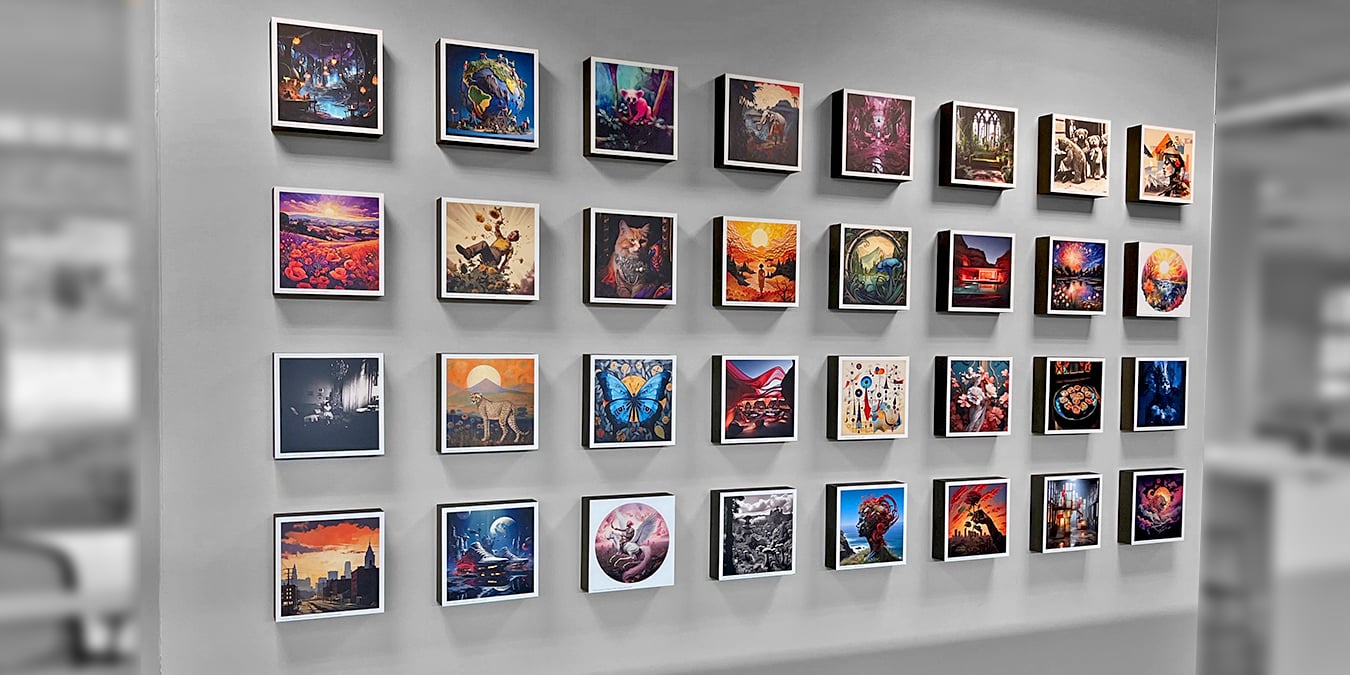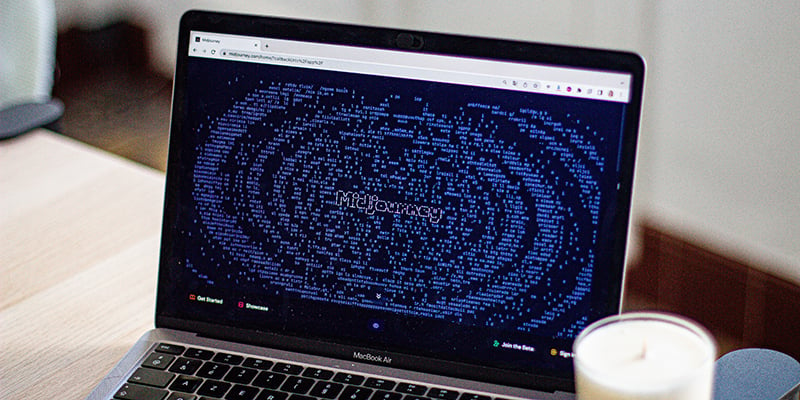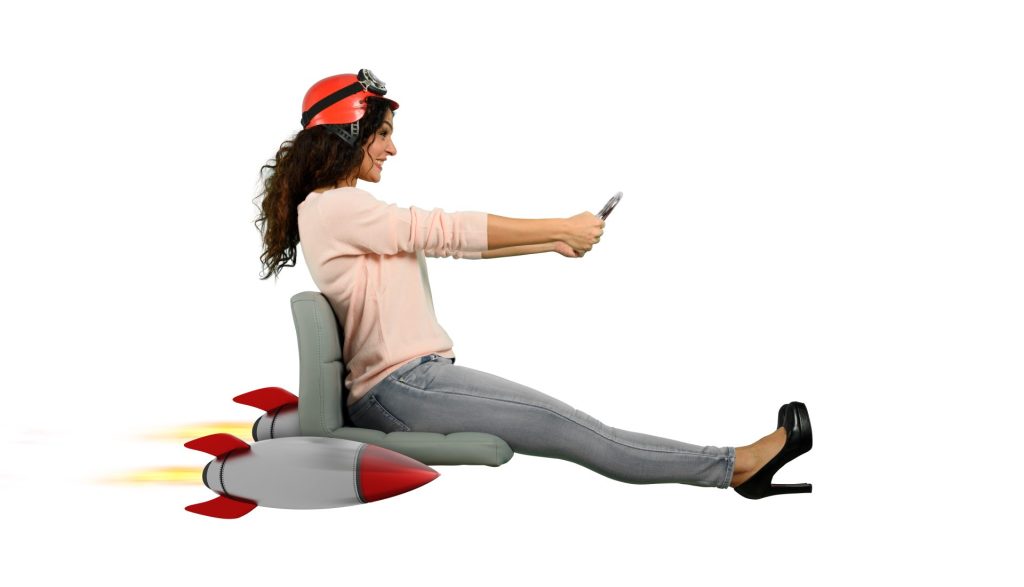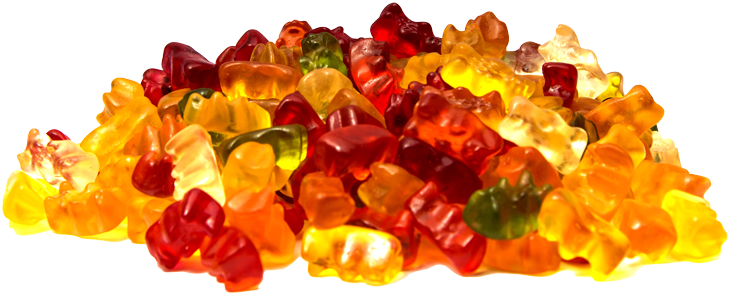Table of Contents
WRITTEN BY Paul Wolski
AI.
Two simple letters that lately have become, for many in the creative community, a notorious abbreviation.
While AI is currently dominating the creative conversation, of course, it’s not a new arrival. From Google Maps and Siri to Uber and Tesla, we’ve been integrating AI into our lives and enjoying its seamless support and on-demand convenience. It’s been openly hiding for decades, and we’ve gotten used to AI delivering its special kind of magic from a behind-the-curtain manner. But over the past year, it feels as though AI has flung back that curtain, finding its new role out in the open, center stage. It is more overtly demonstrating its ability to not only support us but also, by the nervous estimation of some, subvert us altogether by essentially doing our job, or so is the fear.
As a designer who is admittedly a “wait-and-see” adopter (that’s the Gen Xer in me), I too have been marveling at the explosion of articles and posts showing AI’s visual prowess. But I placed it in the realm of creative fantasy, not quite sure how to envision its place at my table. I work alongside a rather large team of mixed-discipline designers—all of us heads down, doing the work of activating brands in tangible, physical spaces ranging from retail and big box to banks and restaurants. With the daily demands of deadlines and to-dos in front of us, I wondered if anyone was stopping to consider whether AI would find its way in here.
When Miller Zell announced the formation of an AI Steering Committee
focused on developing S&P for how the company would implement AI in our practices, it signaled that we must be ready to jump on this speeding train of innovation and know how to ride it — not run after it. It was time for a team meeting. When asked about their familiarity with AI, the designers’ responses varied:
- Most were marginally aware of AI and its quick-spread effect on the creative landscape
- Some were actively engaging/experimenting with AI, more so leisurely on their personal time
- And a few had little knowledge of AI, or its ability to touch our profession
A show of hands also revealed that there was a degree of
anxiety around the notion that AI — eventually — could replace us.
So, before we could start any serious discussion about bringing AI into our creative experience, we first had to confront it, demystify it and use it — as a team. Thus, our inaugural AI Challenge was born, a discovery exercise that invited the full team to participate in designing with AI. It would help level set the experiential curve and introduce us to a different approach to creative concepting.
We started with a live demo session of one of the generative AI platforms,
feeding various prompts and getting outputs that ranged from clever and unexpected to downright weird and kinda creepy. The team quickly realized that the AI output is only as good as the ability of the user to articulate the vision and direct and shape it. Access was provided for everyone to try it for themselves and explore. However, we set down three mandatory prompts that everyone must include in their assignment:
- A location/destination
- A specific color or mix of colors
- A favorite artist/art movement/art style
Beyond that, the designers could add other prompts to make it their own.
For many of us, we fell down the rabbit hole,
finding it hard to generate just one result and walk away. Even the more reluctant of the bunch soon found themselves making dozens of versions: adding new descriptive details, switching the sequence of prompts to alter the outcome, going in an entirely different direction from where they started, sharing their process with their design peers. It felt great to witness this journey into the unknown on a shared, departmental level. We broke through that layer of apprehension together, understanding a little better how to wield this new tool — and even how we could apply it in the context of an actual client project.

Bringing it into our workflow.
There is still plenty to learn, but we have set the right tone to think about how we can integrate AI into the creative process. We see its potential and range of application, from helping stimulate “Big-Idea” generation for brainstorming to delivering fresh takes on inspiration, and even using its generative fill capabilities to enhance photography styling and composition. Viewed as another resource in our tool kit, AI will enable us to stay creatively nimble and articulate our creative strategy with richer perspective.
But back to our team project. Proudly on display at Miller Zell, our AI wall features a kaleidoscopic mix of imagery, color and unique points of view. It serves as a tangible example of how we are prepared to face our new virtual reality.
And if you’re wondering… yes, I did use AI for some reference to write this (and debated with myself whether I should let AI write the whole thing to make the point of embracing it). But color me Old School, I love to write and wanted to express myself accordingly.
AI, I see you. I’m getting there.








